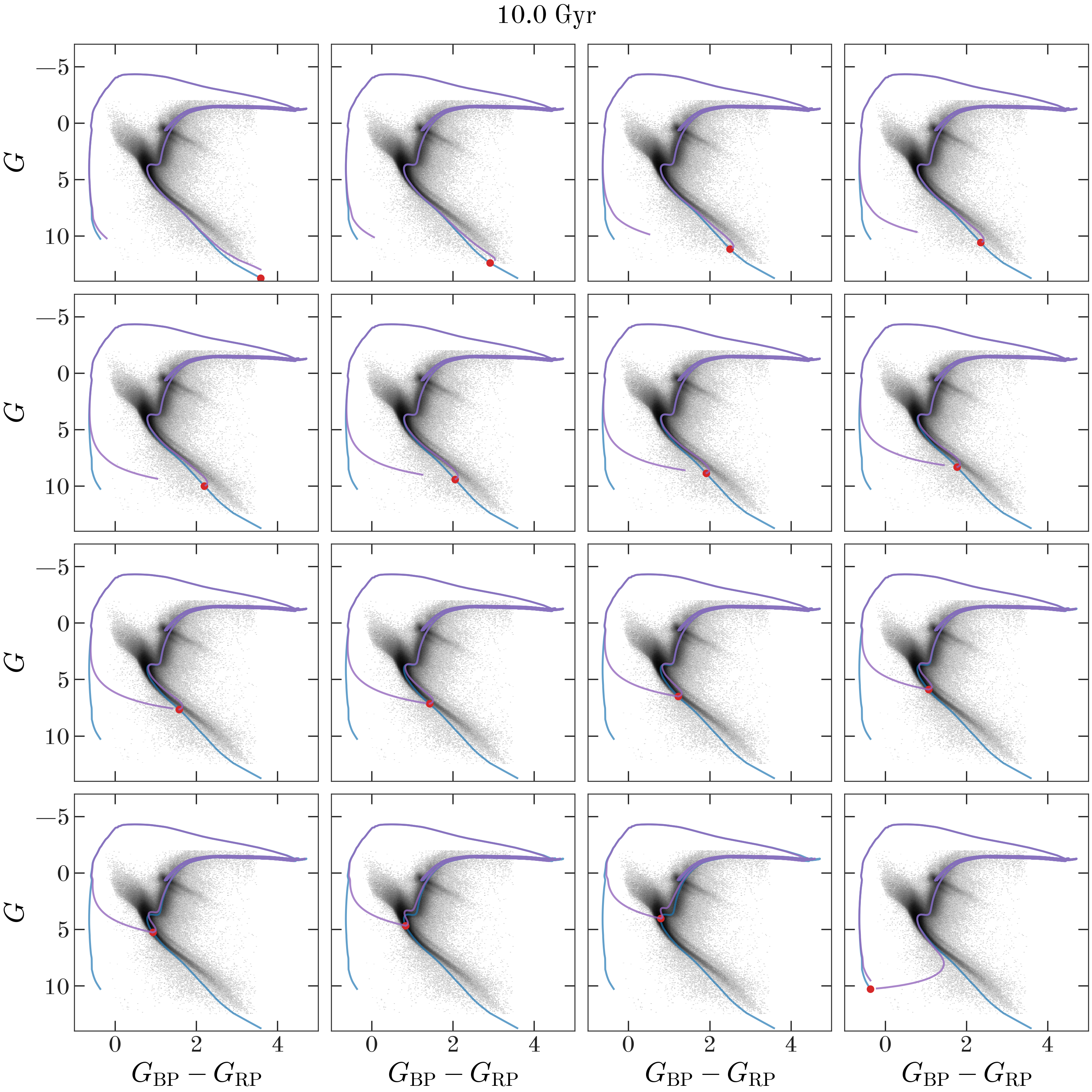

David Hogg and I have been working on “open fiber” proposals for the SDSS-V surveys, which will decide targets for fibers (fiber optic cables that connect from the focal plane to the SDSS spectrographs) that are not allocated by the main survey. As a part of that, I have been making many, many color-magnitude diagrams with data from the Gaia Mission (Data Release 2; DR2). For example, look at any one of the panels in the figures above: The gray background is the same in all panels and shows the density of stars selected from Gaia DR2 in the Gaia BP-RP color and absolute G-band magnitude (these have been cleaned to remove high-RUWE sources, but if that doesn’t mean anything to you…ignore this comment!).
Two features that often come up in conversations between us and others are: (1) the very apparent “binary sequence” above (brighter than) the main sequence, and (2) the spray of stars that are below (fainter) and to the left of (bluer than) the main sequence. From talking to many other people, I have heard a number of different explanations for these stars: white dwarf-main sequence binaries, cataclysmic variables, low-metallicity main sequence stars, or stripped-envelope stars.
Thinking about these classes of stars sent me off on a tangent thinking about unresolved binary stars, and wondering about all of the places that they can appear in the color-magnitude diagram (CMD). So, I downloaded some isochrones from MIST for two different age stellar populations, and made some visualizations to get an intuition for this.
In each panel, I pair up the “star” indicated by the red marker with all other possible stellar types along the isochrone (blue lines), assuming that the two “stars” are blended so that their fluxes add. The two sets of panels are for two different age stellar populations (indicated on the top of the figures). There are many interesting features and things to note in these figures, but of relevance to our original question, it does indeed look like pairing a white dwarf with a lower main sequence star ends up with an unresolved source that would sit below (and bluer than) the main sequence!
One interesting question to think about: Are there places in the CMD that should be empty? Do we find stars there?